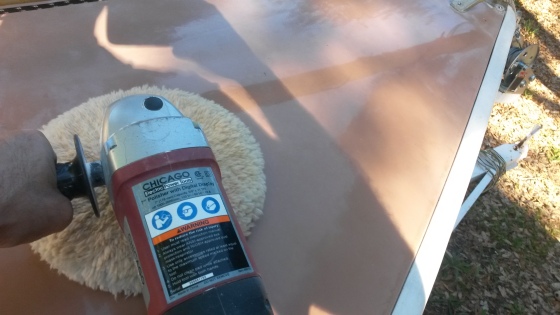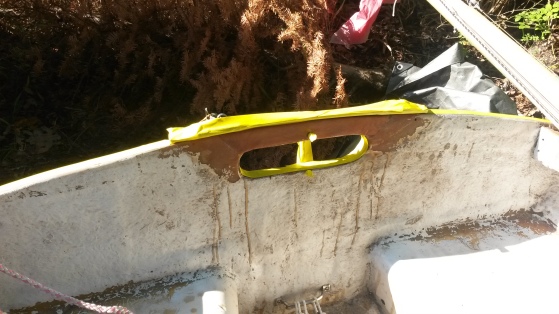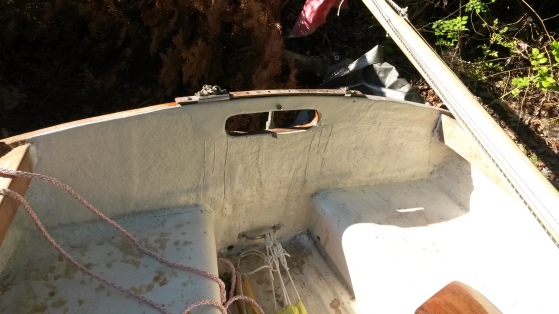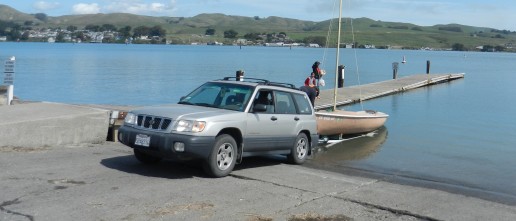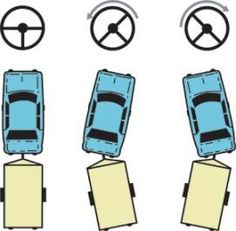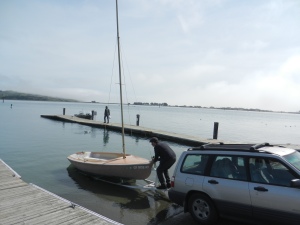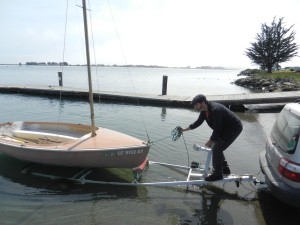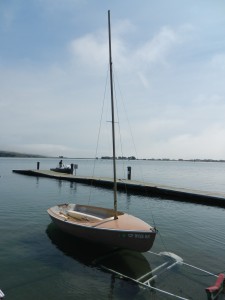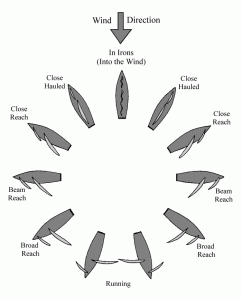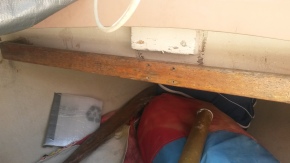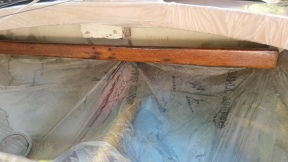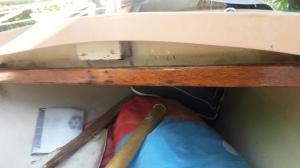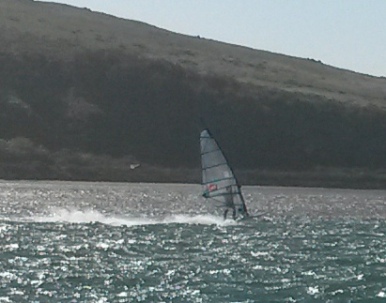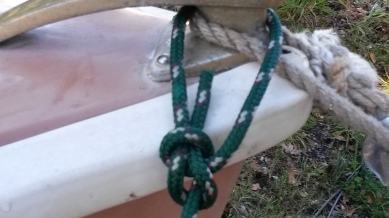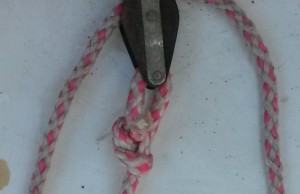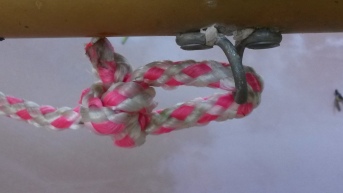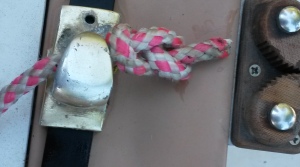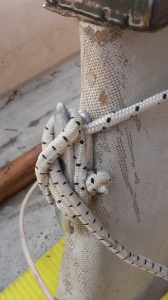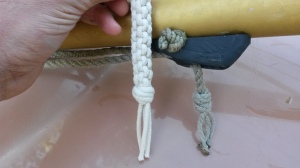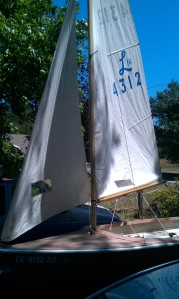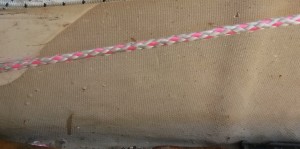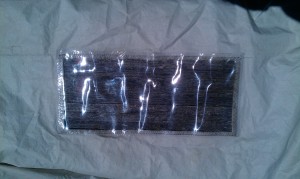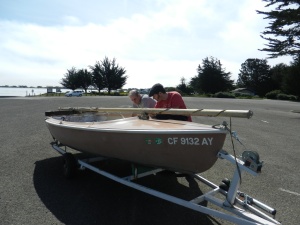
This week I thought I would talk a little bit about towing a small sailboat. The first thing I would recommend is to buy a trailer jack, if your trailer doesn’t already have one. They are cheap, easy to install and can save your back!
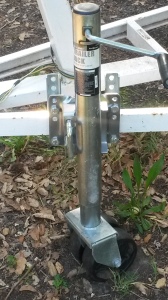
Trailer Jack
The Trailer Jack really helps in positioning the Trailer Coupler (the front of the trailer that connects to the car) over the Trailer Ball (Part of the cars’ Hitch that connects the trailer to the car.
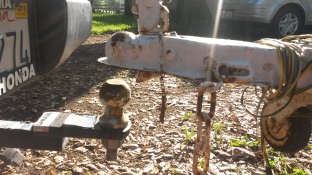
Trailer Coupler positioned over the Trailer Ball
You must make sure the coupler is in the “open” position (with the latch lever up) before lowering it onto the ball. It is critical that you have the right size ball.
After lowering the trailer onto the ball, you need to close the coupler lever and insert the locking pin. Next, attach your safety chain.
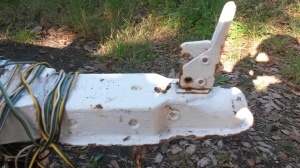
Coupler in the “open” position
The safety chain is a mandatory precaution in case the coupler latch fails or is not properly latched.
Next, the electrical needs to be attached by the connecting the plugs.
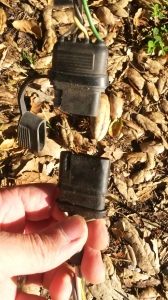
Electrical connections
It is important to check the taillights by having someone in the driver seat turning the headlights on, using the turn signals and pressing the brake pedal.
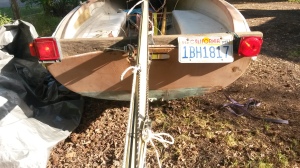
Always do a taillight check
Next, check to make sure the front of the boat is winched all the way forward and the back is tied down to prevent it shifting when you go over bumps.
The last thing you do is check tire pressure and tie a red cloth to the end of the mast to alert any following vehicle that the mast extends behind the car.
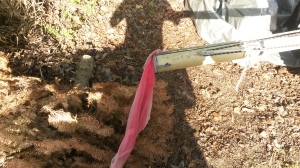
Happy Sailing!
